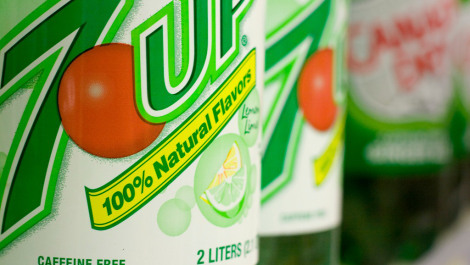Are Natural Flavors Bad For You?
Short answer
Natural flavors are an incredibly broad category of ingredients that are extracted from plant or animal sources rather than synthesized from scratch. If you see natural flavors on the label, you should try and find out more about what exactly goes into flavoring that particular product.
A fairly even ratio of beneficial and harmful qualities. Moderation is important. Very general topics that can lean towards both sides of the spectrum will be placed here as well. Rice, for example, can be good or bad depending on the type.
View Full Grading System
Category 'A'
Very healthy and numerous health benefits. Side effects are rare. Things rated an 'A+' are typically necessary for survival (for example, water).
Very healthy and numerous health benefits. A few harmful qualities may be associated, but only under certain circumstances such as an allergic reaction.
Very healthy and numerous health benefits. Harmful qualities may be associated, but aren't usually serious.
It is important to note that even the best things in life can become bad in immoderate amounts. So, although something may be rated an 'A+', overconsumption/overdoing can bring unwanted effects.
Category 'B'
Very beneficial to your health. Things rated a 'B+' may have a few harmful qualities to pay attention to.
Overall beneficial to your health. Things rated a 'B' may have some harmful qualities to pay attention to.
More beneficial to your health than not. However, harmful qualities are most likely associated and shouldn't be overlooked.
The main difference between category 'A' and category 'B' is the harmful qualities typically present in 'B' items. Serious side effects are usually uncommon, but are still possible and should be taken note of.
Category 'C'
Both beneficial and harmful qualities associated. Things rated a 'C+' are typically a bit more on the beneficial side. Still, moderation is important.
A fairly even ratio of beneficial and harmful qualities. Moderation is important. Very general topics that can lean towards both sides of the spectrum will be placed here as well. Rice, for example, can be good or bad depending on the type.
More harmful than beneficial. Side effects are common, especially when consumed/done excessively. Moderation is very important.
Category 'C' usually denotes to both good and bad qualities. When it comes to this category, it is important to keep this word in mind: moderation.
Category 'D'
Harmful to your health. Although benefits may be associated, the bad most likely outweighs the good. Moderation is very important.
Harmful to your health. A few benefits may be associated, but the bad outweighs the good. Moderation is extremely important.
Harmful to your health. Very few, if any, benefits are present. Things in this category should be avoided as much as possible.
Category 'D' is typically for things that are more harmful than beneficial. While consuming/doing something unhealthy once in a blue moon shouldn't hurt, we definitely recommend eliminating 'D' items as a regular part of your routine/diet.
Category 'F'
Category 'F' is for things that fail to bring anything beneficial to the table, and are very harmful to your health. We recommend completely avoiding anything in this category. Long-term side effects of 'F' items are usually very serious.
Category 'N'
'N' stands for neutral. Things placed into this category are generally (a) neither good nor bad for you, or (b) lack the necessary evidence to reach any conclusions.
Long answer
"Natural flavors" is a broad category that shows up often on ingredient labels. But what, exactly, does it mean?
Natural flavors are distinguished from artificial flavors by their source. A natural flavor is one that's extracted from the "natural world" - according to the Pure Food and Drug Act of 1986, they can come from plants, animals, or yeast. Artificial flavors are synthesized in a lab; natural flavors get their start in a living thing outside the lab.
Most natural flavors, however, do come to you via a laboratory. When you buy a carton of orange juice, for example, some of the "natural flavors" on the label got their start in an orange grove. Those oranges were shipped to a food processing facility, where certain chemical compounds were gleaned from the orange, purified, and concentrated. They were then mixed in precise ratios with other natural (and sometimes synthetic) flavors for a consistent taste and added back into the orange juice.
Natural flavors do not necessarily come from places that you'd expect. A common example is castoreum - a natural flavor that tastes like vanilla. It's not extracted from vanilla beans, however. Instead, castoreum is harvested from the anal glands of a beaver. Like many natural flavors, it's difficult and expensive to produce in large quantities.
On a molecular level, artificial flavors can be identical or near-identical to natural ones. The difference isn't in their structure - it's whether they were synthesized or extracted. Moreover, scientists called "flavorists" often mix together dozens of natural and artificial flavors to achieve a certain taste. Natural and artificial flavors aren't just chemically similar to one another; they're often mixed together.
Whether or not a natural flavor is bad for you depends on, well, the flavor in question. You should regard ingredient labels which list natural flavors with a certain amount of scrutiny - they're not, as discussed above, meaningfully different from artificial flavors in content; what distinguishes them is their source. This doesn't mean that natural flavors are bad for you; it means that they're a very general category that may warrant further investigation on your part to learn what goes into flavoring a particular food.

Please turn your Ad Blocker off to see this content. Thank you!


 Approved by
Approved by 














